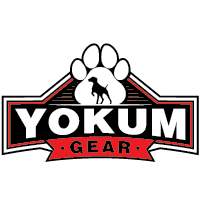House training your dog can be a rewarding yet challenging experience. It requires patience, consistency, and a lot of positive reinforcement. Whether you have a new puppy or an older dog, these effective tips will help you successfully house train your furry friend.
Start Early and Be Consistent
Starting house training as early as possible is crucial. Puppies are like sponges and can easily pick up new habits. Consistency is key; establish a regular schedule for feeding, potty breaks, and playtime. This regularity helps your dog understand what is expected and when.
Use Positive Reinforcement
Praising and rewarding your dog for going outside is one of the most effective training methods. Use treats, verbal praise, and petting whenever your dog eliminates in the appropriate spot. The positive reinforcement makes your dog associate the act with positive outcomes, encouraging repeat behavior.
Establish a Routine
Dogs thrive on routine. Take your dog out first thing in the morning, after meals, before bedtime, and every couple of hours in between. A consistent routine helps your dog develop a reliable schedule and reduces accidents.
Supervise and Confine
Until your dog is fully house trained, supervise them closely. This prevents accidents and allows you to correct behavior immediately. When you are not able to supervise, confine your dog to a small area using a crate or a small, puppy-proofed room.
Recognize the Signs
Pay attention to signs that your dog needs to go outside, such as sniffing, circling, or whining. Quick responses to these signals help reinforce positive behaviors and prevent accidents inside the house.
Use a Crate
Crate training can be an invaluable tool for house training. Dogs naturally avoid soiling their sleeping area, making crates an effective way to control and monitor behavior. Ensure the crate is appropriately sized: large enough for your dog to turn around but not so large that they can designate a corner for elimination.
Clean Accidents Properly
If your dog has an accident inside, clean it thoroughly with an enzyme cleaner. Regular household cleaners may not eliminate the scent, and dogs are likely to return to the same spot if they can smell urine or feces.
Avoid Punishment
Punishing your dog for accidents is counterproductive. It can cause stress and anxiety, making house training even more challenging. Instead of scolding, focus on reinforcing positive behavior and managing the environment to prevent accidents.
Gradually Increase Freedom
As your dog becomes more reliable with house training, gradually increase the freedom they have in your home. Start with confined, supervised areas and slowly expand to larger spaces as they demonstrate control and consistency.
Be Patient and Persistent
House training can take time, and there may be setbacks along the way. Patience and persistence are crucial. Celebrate small successes and stay committed to your training routine. With time and consistency, your dog will become a well-trained and reliable member of your household.
In conclusion, house training your dog requires a blend of patience, consistency, and positive reinforcement. By following these effective tips, you and your canine companion can build a strong foundation for a lifetime of good habits and a clean home.

